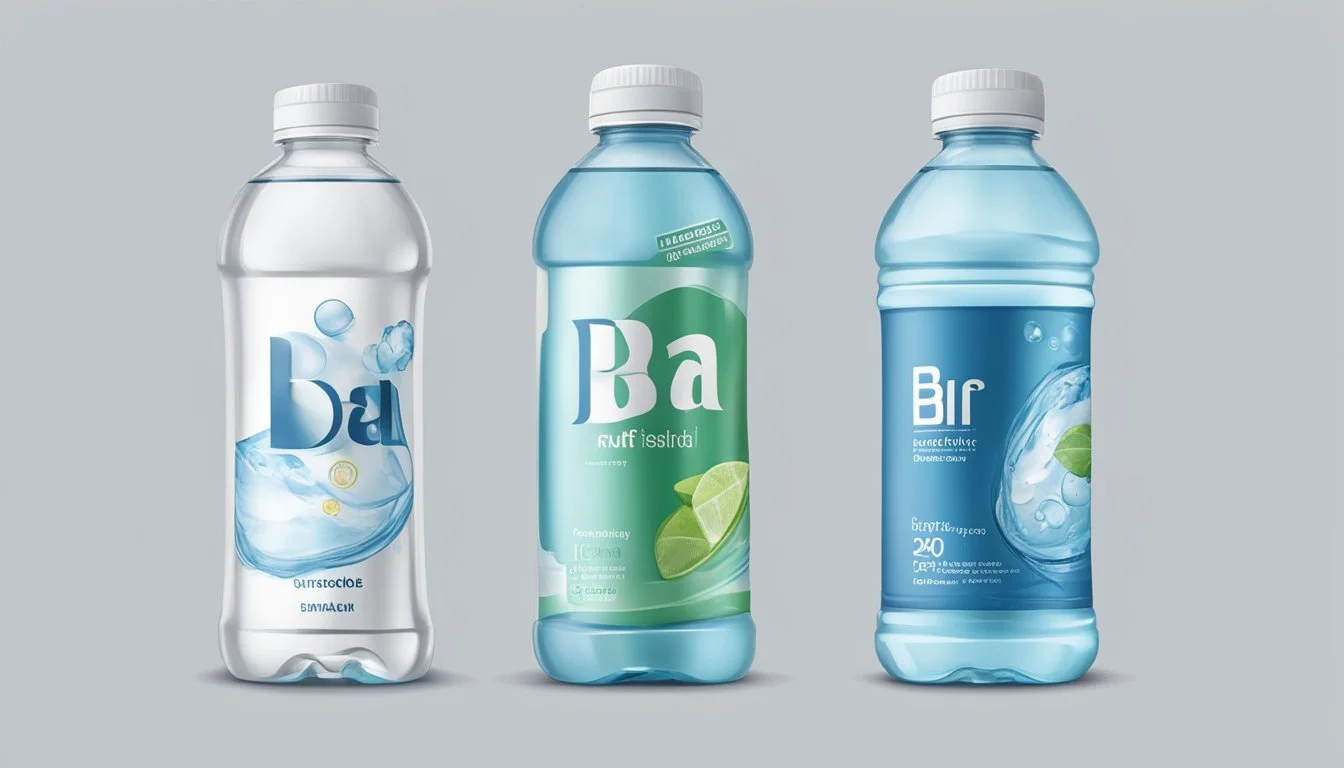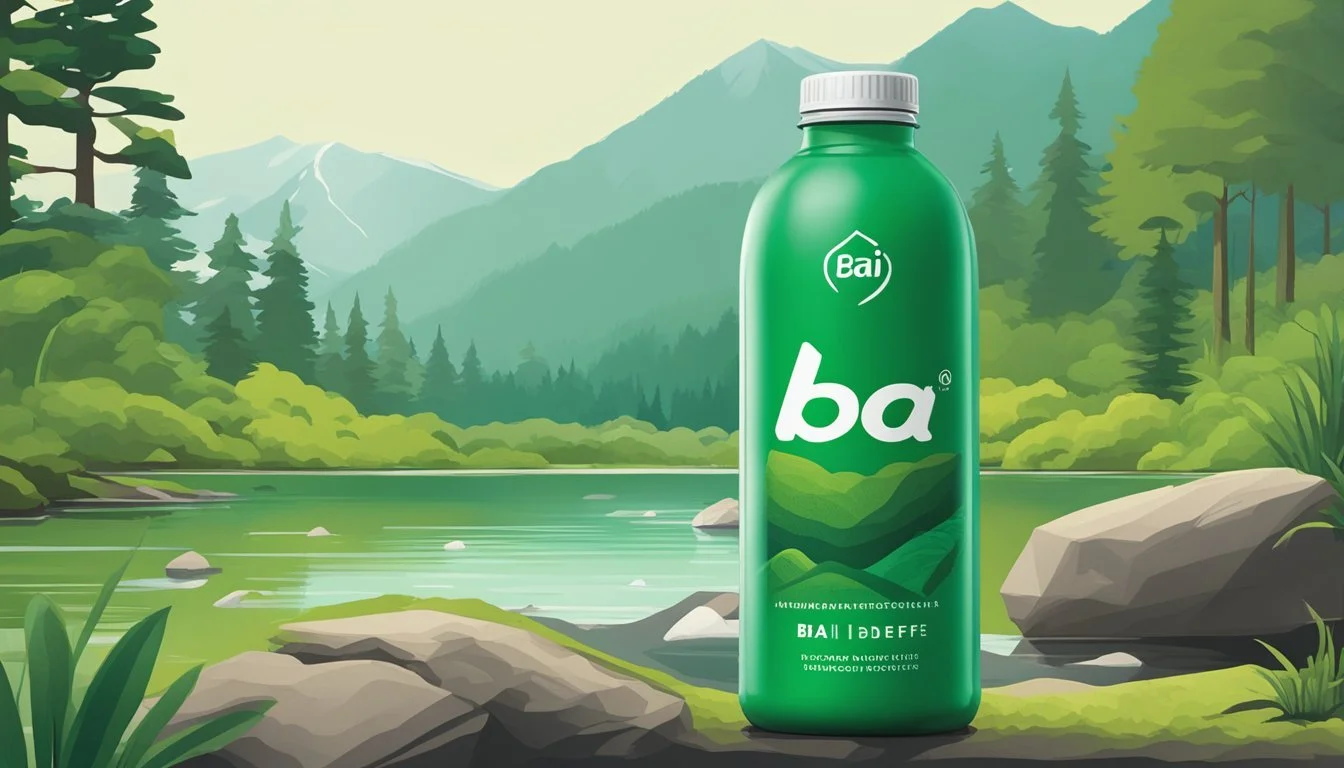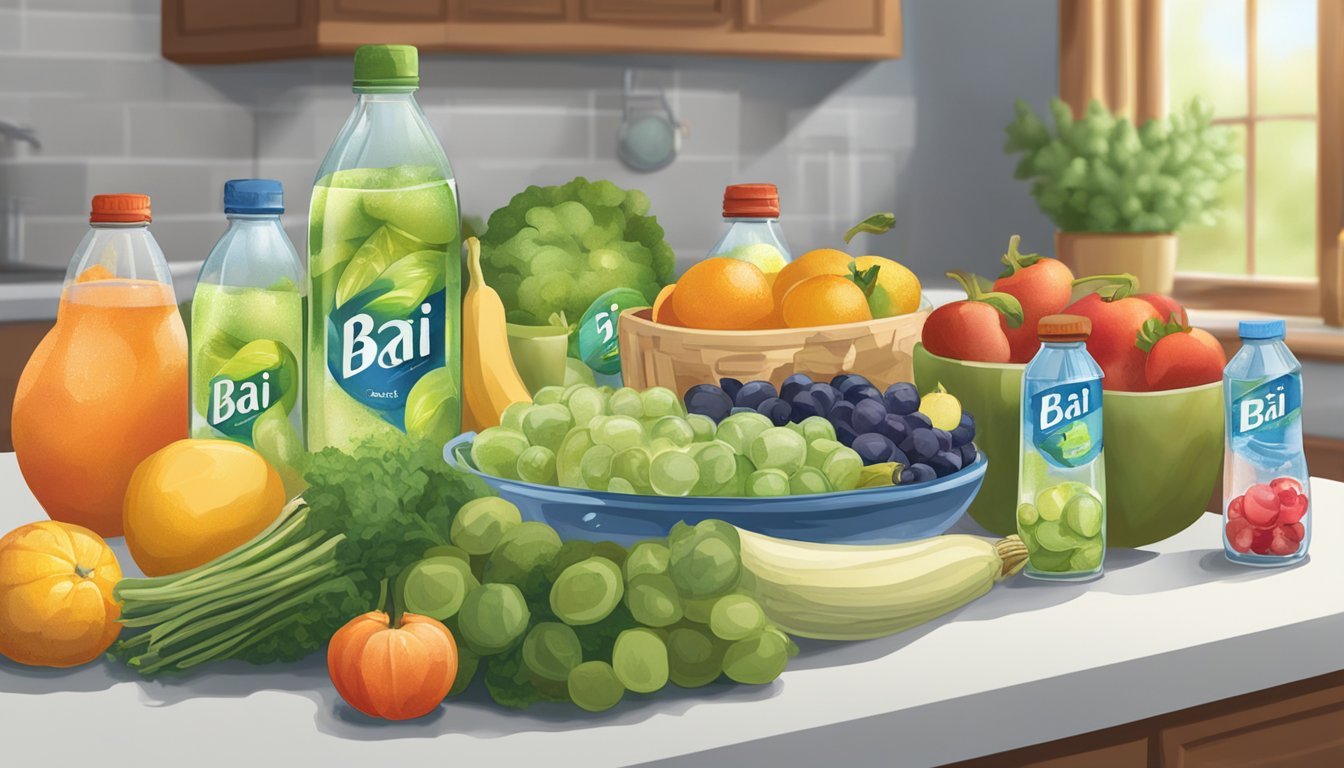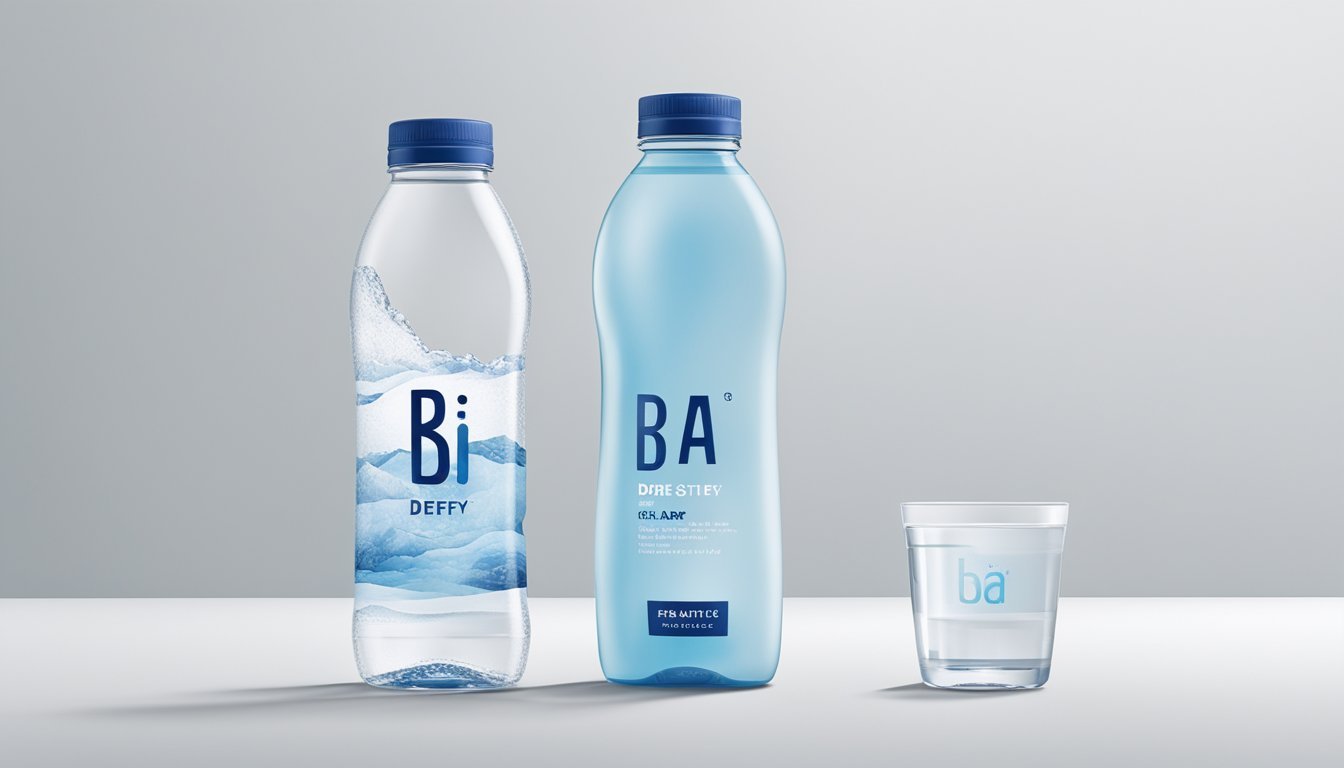Bai vs. Defy
The Ultimate Bottled Water Showdown
When choosing between Bai and Defy bottled water, consumers are often drawn by the unique benefits each brand offers. Bai boasts its antioxidant-infused beverages, flavored with coffee fruit extract and containing minimal sugar and calories. For those looking to enhance their hydration with added nutritional value, Bai provides a compelling option.
On the other hand, Defy aims to attract health-conscious individuals with its distinctly formulated water enriched with electrolytes and specialized pH levels. These enhancements promise not just hydration but potentially improved muscle function and recovery, appealing especially to athletes and fitness enthusiasts.
Both Bai and Defy cater to different preferences and needs, making the choice between them dependent on what the consumer values more—nutritional additives or performance-enhancing properties. For water that combines taste with health benefits, Bai stands out, while Defy excels in providing hydration optimized for athletic performance. This comparison will help you decide which bottled water better suits your lifestyle and hydration goals.
Understanding Bai and Defy Beverages
Bai and Defy are two prominent brands in the bottled water market, known for their distinctive approaches to hydration and wellness. This section dives into their brand histories, mission statements, product ranges, and varieties.
Brand History and Mission Statements
Bai was founded by entrepreneur Ben Weiss in 2009. The brand’s mission is centered on providing refreshment without compromise, with a focus on delivering tasty beverages that are low in sugar and calories. Bai emphasizes the use of antioxidant properties derived from the coffee fruit, aiming to bring healthier drink options to the market.
Defy, on the other hand, was co-founded by NFL Hall of Famer Terrell Davis. Established with the goal of aiding performance and recovery, Defy focuses on creating CBD-infused beverages. The brand emphasizes breaking down boundaries and is committed to promoting wellness through innovation, incorporating the benefits of cannabinoids in their products.
Product Range and Variety of Products
Bai offers a diverse array of flavored water beverages. Some popular varieties include the Antioxidant Infusion which features flavors like Brasilia Blueberry and Kula Watermelon. Bai also offers Bubbles, a line of carbonated drinks, and Bai Supertea, incorporating teas and fruit flavors. Each bottle typically contains just 10 calories and 1 gram of sugar, with added antioxidants.
Defy, by contrast, caters to a niche with its CBD-infused performance drinks. Their product lineup includes flavored options designed to aid in recovery and hydration. Each drink blends 20mg of broad-spectrum CBD with electrolytes and vitamins. Flavors often seen in their range include Lemonade, Mixed Berry, and Orange Mango, each targeting athletes and wellness-oriented individuals.
By offering innovative hydration solutions, both Bai and Defy cater to different consumer needs, enhancing their positioning in the market.
Nutritional Content Analysis
This section compares the nutritional elements of Bai and Defy bottled waters, covering calories, sweeteners, natural flavors, ingredients, vitamins, minerals, antioxidants, and other nutrients.
Calorie Content and Sweeteners
Bai:
Bai beverages are known for their low-calorie content. Each bottle of Bai contains only 10 calories. The sweetness in Bai comes from natural sources, with the primary sweetener being stevia extract. Bai also includes just 1 gram of sugar per bottle, making it appealing to those monitoring their sugar intake.
Defy:
Defy water stands out by being completely calorie-free. It contains no added sugars or sweeteners. This makes Defy a suitable choice for those looking to eliminate any addition of calories or sugars in their hydration.
Natural Flavors and Ingredient Sources
Bai:
Bai is recognized for using natural flavors derived from fruits. For example, the Kula Watermelon flavor integrates natural watermelon juice, contributing to a more authentic taste. Additionally, Bai uses vegetable juice concentrates as natural colorants, avoiding artificial dyes.
Defy:
Defy also utilizes natural flavors but primarily focuses on providing unflavored, pure water options. This simplicity appeals to those who prefer a clean and straightforward hydration experience without the addition of flavors or colors.
Vitamin and Mineral Profile
Bai:
Bai water contains small amounts of vitamins, primarily from its fruit extracts. It also includes electrolytes, which can aid in hydration efficiency. However, Bai is not a significant source of vitamins and minerals overall. Consumers may still benefit from minor nutrient enhancements while enjoying its flavored options.
Defy:
Defy water generally does not contain added vitamins or minerals except for essential electrolytes such as potassium and sodium. These electrolytes help maintain fluid balance and support hydration. Defy focuses on delivering pure water without additional nutritional fortifications.
Presence of Antioxidants and Other Nutrients
Bai:
One of the key highlights of Bai is its inclusion of antioxidants. These come from sources like coffee fruit extract and tea extract, known for their health benefits. Antioxidants help combat oxidative stress in the body, which can be a positive addition for those seeking health-enhancing properties in their beverages.
Defy:
Defy does not emphasize antioxidant content in its water products. It offers a straightforward hydration solution without the addition of antioxidants or other specific nutrients. This positions Defy as a pure, uncomplicated water choice without extra health-targeted ingredients.
Health and Hydration Benefits
Bai and Defy offer unique benefits in terms of health and hydration. Each brand differentiates itself with specific ingredients and nutritional profiles that cater to different needs.
Hydration and Electrolytes
Efficient hydration is crucial, and both Bai and Defy aim to provide it. Bai uses a blend of purified water infused with antioxidants from coffee fruit extract, while Defy incorporates electrolytes to enhance hydration. Electrolytes like sodium and potassium are essential for maintaining fluid balance in the body, reducing the risk of dehydration.
Whether you prefer the antioxidant-rich approach of Bai or the electrolyte-focused composition of Defy, each brand offers benefits that cater to different hydration preferences.
Potential Health Benefits and Antioxidant-Rich Ingredients
Bai’s antioxidant infusion is a notable feature. Antioxidants are substances that can prevent or slow damage to cells caused by free radicals. The coffee fruit extract in Bai is particularly rich in antioxidants, which might offer benefits such as supporting immune function and reducing oxidative stress.
Defy also focuses on health benefits by including pure botanical extracts and compounds that are known for their health-promoting properties. Consumers looking for an antioxidant boost might lean towards Bai, while those interested in innovative botanical ingredients might find Defy to be a better choice.
Sugar Content and Its Impact
Both Bai and Defy market themselves as low-calorie options, critical for those monitoring their sugar intake. Bai contains only 1 gram of sugar per bottle, making it a favored choice for those looking to limit sugar consumption.
Defy also minimizes sugar content, and both brands avoid artificial sweeteners, opting instead for natural alternatives. Low-sugar beverages can contribute to better weight management and reduced risk of chronic diseases, making both Bai and Defy appealing choices for health-conscious individuals.
By striking a balance between low sugar content and enjoyable taste, both Bai and Defy provide bottled water options that cater to health-conscious consumers looking for more than just plain water.
Comparing Flavors and Sweetness Profiles
When evaluating Bai and Defy bottled waters, it's essential to look at the variety of flavors each brand offers, as well as the types of sweeteners and sugar alternatives used to create their unique taste experiences.
Flavors Offered by Bai and Defy
Bai provides a wide range of flavored waters, boasting more exotic options such as Brasilia Blueberry, Costa Rica Clementine, and Bolivia Black Cherry. Each flavor is infused with antioxidants from the coffee fruit extract, providing a distinctive taste that's both refreshing and health-conscious.
Defy, known for its emphasis on performance beverages, offers flavors like Mango, Lemon Lime, and Wild Berry. These options are designed to appeal to those looking for both taste and hydration. While Bai leans towards fruit-based flavors, Defy includes options that cater to athletic performance and recovery.
Analysis of Sweetener Blends and Sugar Alternatives
Bai's beverages are sweetened with a blend that includes stevia extract and erythritol, a type of sugar alcohol. This combination allows Bai to maintain a low-calorie count, with each bottle typically containing only 10 calories and 1 gram of sugar. The use of stevia provides a natural sweetness, while erythritol helps to prevent any aftertaste.
Defy opts for a different approach, utilizing cane sugar and monk fruit extract to achieve their desired sweetness profiles. Although this results in a slightly higher calorie content, the natural sources of sweetness can be more appealing to those who prefer to avoid synthetic or highly processed ingredients.
Both brands prioritize providing flavorful options without excessive calories or artificial sweeteners, giving consumers a variety of tastes that can align with their health goals.
Consumer Experience and Taste Preferences
Understanding what consumers value in Bai and Defy can shed light on overall satisfaction and preferences related to taste. Key elements include detailed market research and results from taste tests.
Market Research on Consumer Preference
Consumer preferences often hinge on flavor, nutritional value, and brand reputation. Bai is popular for its low-calorie, antioxidant-infused flavored waters. This makes it a hit with individuals seeking added health benefits in their hydration options.
Defy, on the other hand, markets itself as high-performance water tailored for athletes. It generally attracts fitness enthusiasts who prioritize functional benefits, such as electrolytes for enhanced performance and recovery, over flavor variations.
Both brands offer unique selling points. Bai's emphasis on taste and health benefits appeals to a broader audience, including those conscious of caloric intake. Defy’s focus on performance and replenishment targets a more specific, athletic demographic.
Taste Test Comparisons
Taste preferences highly influence consumer choices between Bai and Defy. In various taste tests, Bai's flavored options, such as antioxidant-infused lemonades and teas, receive praise for their vibrant, appealing taste profiles. Consumers appreciate the natural sweetness without artificial overtones.
Defy’s unflavored water tends to fare well among those who prefer crisp, clean hydration. Feedback highlights its refreshing quality, essential during intense workouts or sports activities. Some find the taste less compelling due to the lack of variety but value its functional aspects.
In summary, Bai tends to outperform in flavor variety and satisfaction, making it a favorite for casual consumption. Defy, valued for its performance benefits and clean taste, attracts a niche audience focused on functional hydration.
Packaging and Environmental Considerations
When comparing Bai and Defy bottled water, it's essential to examine their packaging and environmental impact. These factors significantly influence sustainability and carbon footprint.
Bottling Materials and Recycling
Bai utilizes plastic bottles for their packaging, which are common across many beverage brands. These bottles are typically made from PET plastic, which is recyclable but often ends up in landfills due to inadequate recycling practices.
In contrast, Defy employs a more innovative approach by using aluminum cans. Aluminum is infinitely recyclable and generally boasts a higher recycling rate compared to plastic. This reduces waste and promotes better reuse of materials, making it a greener option.
Product Lifecycle and Carbon Footprint
The product lifecycle of Bai’s plastic bottles includes extraction, production, and disposal. Each stage presents environmental challenges, such as petroleum use for plastic and the pollution from plastic waste. The carbon footprint is substantial due to the energy-intensive processing and the low recycling efficiency.
Defy’s aluminum cans, on the other hand, present a lower carbon footprint over their lifecycle. Aluminum production is energy-intensive, but the ability to recycle it multiple times without degradation minimizes long-term environmental impact. This efficiency contributes positively to carbon reduction compared to single-use plastics.
By examining these aspects, consumers can make informed choices regarding the environmental sustainability of their bottled water.
Safety and Side Effects
When comparing Bai and Defy bottled waters, several safety considerations and potential side effects need to be addressed. This analysis will focus on the use of artificial sweeteners and the presence of contaminants that may impact consumer health.
Artificial Sweeteners and Potential Side Effects
Many bottled beverages contain artificial sweeteners to reduce calorie content while maintaining sweetness. Bai utilizes erythritol and stevia, which are considered safe by various health authorities. Erythritol, a sugar alcohol, can cause digestive issues such as bloating or diarrhea if consumed in large amounts. Stevia, a natural sweetener, is generally well-tolerated but may cause mild side effects in some individuals.
Defy may use different sweetening agents, but their impact is similar. It’s important to check labels for any potential allergens or ingredients sensitive individuals might react to. For those concerned about artificial additives, opting for pure water versions from either brand is advisable.
Contaminants and Purity Assessment
Evaluating the purity of bottled water involves a careful look at potential contaminants. Bai is known for being free from artificial colors and typically maintains low levels of harmful substances, thanks to rigorous processing standards. It includes antioxidants and vitamin C sourced from coffee fruit extract, which do not compromise its safety profile.
Defy also emphasizes purity, often subjected to filtration processes that remove impurities like lead and other contaminants. Consumers should ensure their chosen product undergoes regular testing for heavy metals and other harmful substances. Reviewing third-party purity assessments or certifications can provide additional peace of mind regarding water safety.
Availability and Accessibility
Bai and Defy bottled waters have varying degrees of availability and accessibility due to their distribution channels and pricing strategies. Consumers value ease of purchase and affordability, which are crucial for regular consumption.
Distribution Channels and Retail Presence
Bai is widely available across multiple distribution channels, including grocery stores, convenience stores, and online retailers. This extensive retail presence ensures that consumers can easily find Bai products regardless of their location. Bai's strong brand partnerships have also enabled their products to be stocked in several major retail chains.
Defy, on the other hand, primarily focuses on online sales and select retailers. Their targeted distribution strategy means that while they might not be as omnipresent as Bai, they have a significant presence in niche markets and specialty stores. This allows them to cater to a specific, health-conscious audience.
Brand Retail Channels Online Availability Bai Grocery stores, convenience stores Major online retailers Defy Select specialty stores Brand website, Amazon
Comparative Pricing
The pricing strategies of Bai and Defy also differ, affecting their accessibility and appeal. Bai positions itself as a moderately priced option, making it affordable for a broad consumer base. Regular promotions and bulk purchase options further enhance its accessibility, allowing consumers to get more value for their money.
Defy is generally priced at a premium, reflecting its focus on higher quality and specialized formulations. This premium pricing means it may not be the go-to choice for all consumers but rather for those willing to pay extra for perceived health benefits and unique features. This strategy emphasizes quality over quantity, targeting a specific segment of the market.
Conclusion and Recommendations
When comparing Bai and Defy, each has unique benefits that cater to different preferences. Bai stands out with its antioxidant-infused beverages and a low calorie count, which might appeal to health-conscious consumers. Defy, not assessed with publicly available exact data, could better suit those prioritizing pure hydration without additional ingredients.
In terms of taste, Bai's flavor profile, derived from natural sources like coffee fruit extract and vegetable juice concentrates, offers variety. Defy might offer a more neutral taste, aligning with traditional bottled water preferences.
For those focusing on sugar content, Bai contains only 1 gram of sugar per bottle. Defy’s specifics are absent but standard water typically has no sugar.
Price considerations play a role in decision-making too. Bai's pricing ranges between $2 to $3 per bottle, placing it in the premium segment. Defy's pricing would depend on its positioning and features which aren't detailed.
Ultimately, the choice between Bai and Defy depends on individual needs:
For additional health benefits and flavor: Bai is a strong contender with its antioxidants and varied flavors.
For simple hydration and possibly lower costs: Defy may be preferred if it aligns with conventional water pricing.
Choosing the right water should reflect one's personal health goals and taste preferences.








